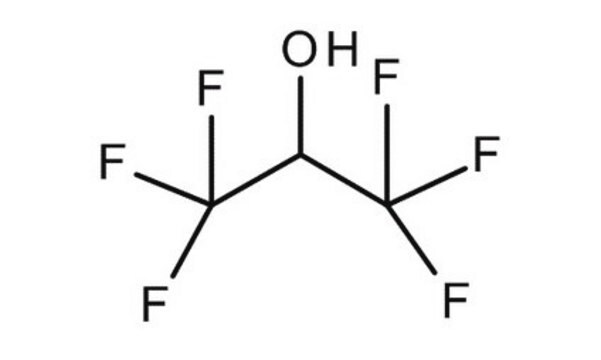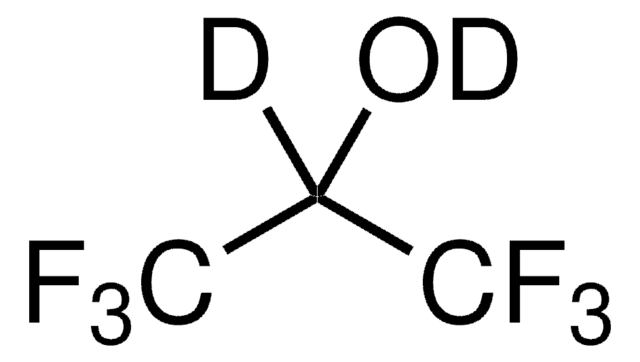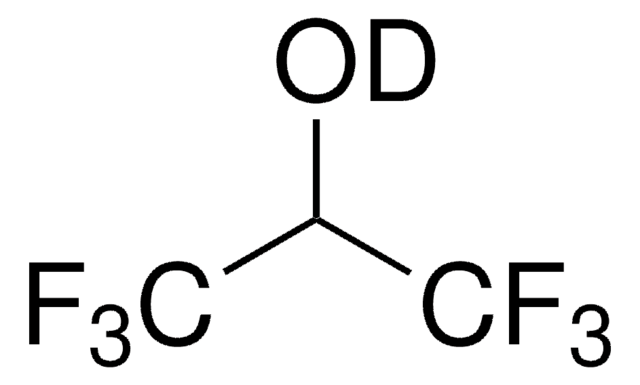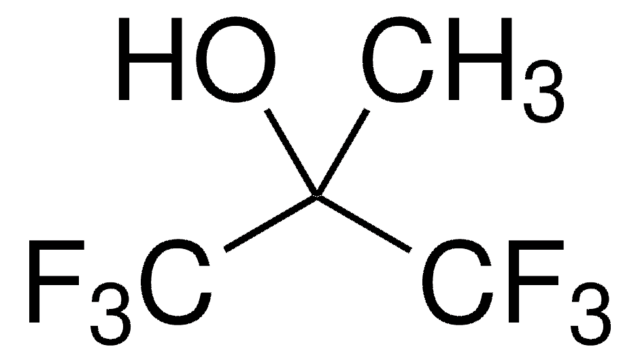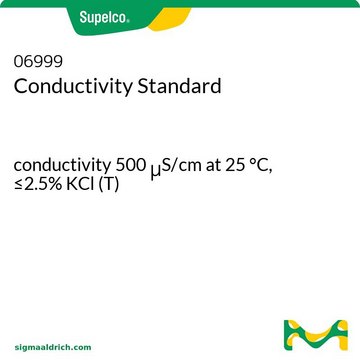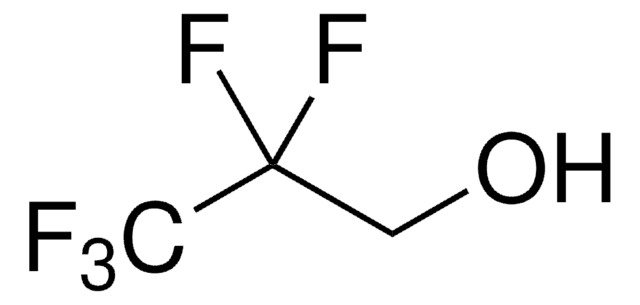52517
1,1,1,3,3,3-Hexafluoro-2-propanol
for GC derivatization, LiChropur™, ≥99.8%
Sinónimos:
HFP, Hexafluoroisopropanol
About This Item
Productos recomendados
grade
for GC derivatization
Quality Level
assay
≥99.8% (GC)
≥99.8%
quality
LiChropur™
reaction suitability
reagent type: derivatization reagent
reaction type: Acylations
reagent type: derivatization reagent
reaction type: Esterifications
technique(s)
gas chromatography (GC): suitable
refractive index
n20/D 1.275 (lit.)
bp
59 °C (lit.)
mp
−4 °C (lit.)
density
1.596 g/mL at 25 °C (lit.)
SMILES string
OC(C(F)(F)F)C(F)(F)F
InChI
1S/C3H2F6O/c4-2(5,6)1(10)3(7,8)9/h1,10H
InChI key
BYEAHWXPCBROCE-UHFFFAOYSA-N
¿Está buscando productos similares? Visita Guía de comparación de productos
Categorías relacionadas
General description
Application
Other Notes
Legal Information
signalword
Danger
hcodes
Hazard Classifications
Eye Dam. 1 - Repr. 2 - Skin Corr. 1A - STOT RE 2
Storage Class
8A - Combustible corrosive hazardous materials
wgk_germany
WGK 2
flash_point_f
No data available
flash_point_c
No data available
ppe
Faceshields, Gloves, Goggles
Elija entre una de las versiones más recientes:
¿Ya tiene este producto?
Encuentre la documentación para los productos que ha comprado recientemente en la Biblioteca de documentos.
Los clientes también vieron
Nuestro equipo de científicos tiene experiencia en todas las áreas de investigación: Ciencias de la vida, Ciencia de los materiales, Síntesis química, Cromatografía, Analítica y muchas otras.
Póngase en contacto con el Servicio técnico
